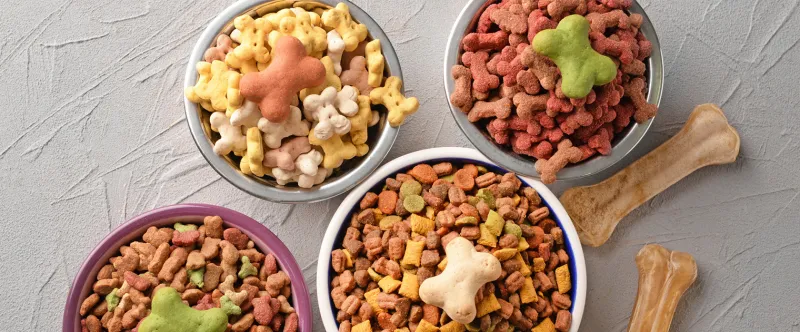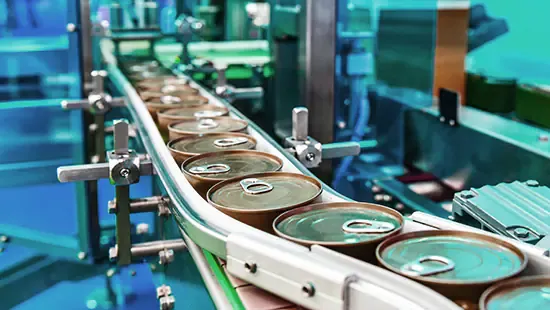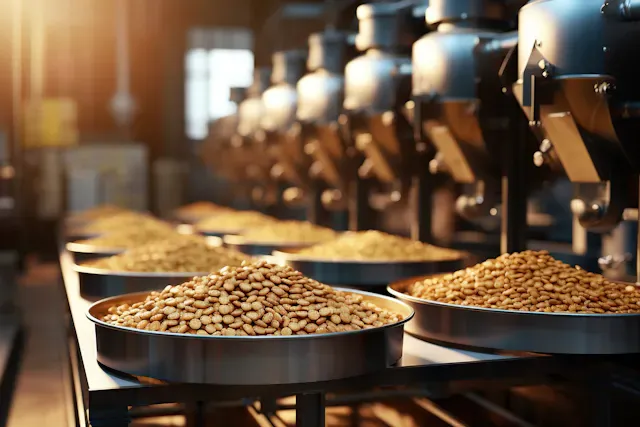Understanding Wastewater Management Practices in Pet Food Processing
Introduction to Wastewater Management Practices in Pet Food Processing:
Sustainability has emerged as a top priority in the ever-changing world of pet food production. As consumers want more ecologically friendly products, pet food processing companies face pressure to implement ethical practices, particularly in wastewater treatment. This blog delves into the difficulties of wastewater management in pet food manufacturing, including tailored solutions, resource recovery alternatives, and the continual drive for environmental stewardship.

Understanding Wastewater in Pet Food Processing
Wastewater generated in pet food processing facilities is indeed a complex amalgamation of organic and inorganic compounds, originating from diverse sources within the production process. Ingredients such as meats, grains, and vegetables contribute to the effluent's composition, along with the introduction of additives and cleaning agents. These components collectively create a varied and intricate mixture that poses challenges for wastewater treatment.
Contaminants in pet food processing effluent include lipids, proteins, carbohydrates, and chemical additives. These compounds must be removed efficiently in order to maintain environmental integrity and meet severe regulatory requirements. Furthermore, infection management is critical for maintaining the safety and quality of pet food items. Pathogens can enter the wastewater system via a variety of routes, including raw material handling and processing equipment. Thus, comprehensive treatment techniques are required to reduce the dangers associated with pathogen contamination.
To efficiently handle pet food production wastewater, businesses must establish strong treatment processes while following to regulatory guidelines. This includes the use of modern treatment technologies to effectively remove pollutants and control diseases. Continuous monitoring of effluent quality is required to ensure regulatory compliance and promote environmental stewardship. By adopting ethical manufacturing processes and investing in wastewater management strategies, pet food businesses may not only ensure the safety of their products but also help to preserve environmental health for future generations.
Tailored Treatment Approaches for Pet Food Production
Tailored treatment approaches are indispensable in addressing the unique challenges posed by wastewater in pet food processing. These specialized processes encompass a range of techniques aimed at effectively removing contaminants and purifying the effluent.
Physical separation methods play a vital role in this process, allowing for the removal of suspended solids and impurities from the wastewater. Techniques such as membrane filtration, including ultrafiltration and reverse osmosis, are employed to achieve this separation, ensuring that the effluent meets quality standards for discharge or reuse.
Biological treatment methods are also crucial components of tailored treatment approaches for pet food production wastewater. Processes such as activated sludge and anaerobic digestion are utilized to break down organic compounds present in the effluent. By reducing biochemical oxygen demand (BOD) levels, these methods contribute to the overall purification of wastewater, mitigating its environmental impact.
Moreover, advanced oxidation processes are implemented to further enhance the treatment of pet food production wastewater. Technologies such as UV irradiation and ozonation are utilized to eliminate pathogens and trace chemicals, ensuring that the treated effluent meets stringent quality standards before discharge into the environment or reuse in non-product contact areas.

Resource Recovery in Pet Food Processing
Maximizing Resource Value:
Pet food processing facilities have the potential to maximize resource value by recovering resources from wastewater, in addition to waste treatment. By recognizing and extracting value from waste streams, these facilities not only minimize their environmental impact but also improve operational sustainability.
Utilizing Anaerobic Digestion:
Among the various techniques available, anaerobic digestion processes stand out as effective means to generate biogas from organic matter in wastewater. This biogas serves as a renewable energy source, powering various operations within the facility. Additionally, anaerobic digestion enables the extraction and repurposing of valuable nutrients like fats, proteins, and other organic compounds, which can be utilized in animal feeds or biodiesel production, thus contributing to the circular economy and reducing reliance on external inputs.
On-Site Wastewater Recycling in Pet Food Processing
Integral Water Recycling Initiatives:
On-site water recycling initiatives play a crucial role in reducing freshwater consumption and minimizing wastewater discharge in pet food processing facilities. These initiatives are integrated into facility operations to optimize resource utilization and minimize environmental impact.
Closed-Loop Systems for Sustainable Practices:
To achieve this, pet food processing facilities implement closed-loop systems for water reuse. Effluent from cleaning and processing operations undergoes rigorous treatment to meet stringent quality standards before reuse in non-product contact areas or cooling systems. By adopting sustainable water management practices, facilities not only conserve precious water resources but also alleviate strain on local ecosystems and municipal wastewater treatment infrastructure.

Continuous Improvement and Compliance in Pet Food Processing
Continuous improvement lies at the heart of sustainable wastewater management in pet food processing facilities. It involves a commitment to ongoing refinement across various aspects of operations to bolster efficiency and minimize waste generation.
Pet food processing facilities continuously optimize their production processes, seeking to streamline workflows and maximize resource utilization. This may involve upgrading equipment, implementing new technologies, and fine-tuning procedures to reduce resource wastage and enhance operational efficiency.
Moreover, strict adherence to environmental regulations is paramount for ensuring compliance and upholding environmental stewardship. Facilities must adhere to rigorous standards governing wastewater management, ensuring that their practices meet or exceed legal requirements. This dedication to compliance is crucial in safeguarding environmental integrity and fostering public trust.
In addition to regulatory compliance, proactive monitoring of wastewater quality is essential. Pet food processing facilities employ advanced monitoring systems and robust sampling protocols to continuously assess the quality of effluent. This proactive approach enables prompt identification of any deviations from desired standards, allowing for timely corrective measures to prevent environmental contamination.wastewater treatment operations
Furthermore, embracing innovation and cultivating a culture of accountability are critical components of successful wastewater management. By fostering the development of innovative technologies and approaches, facilities can enhance wastewater treatment operations and keep ahead of changing environmental challenges. Furthermore, developing a feeling of accountability in employees guarantees a shared commitment to environmental stewardship and encourages continual improvement efforts.
Conclusion:
In conclusion, effective wastewater management is a cornerstone of sustainability for pet food processing facilities. By adopting tailored treatment approaches, exploring resource recovery opportunities, implementing on-site wastewater recycling initiatives, and prioritizing continuous improvement and compliance, these facilities can mitigate environmental impact and enhance operational efficiency. As stewards of the environment and guardians of pet health, pet food manufacturers must embrace innovation and responsibility to navigate the complex challenges of wastewater management successfully. In doing so, they not only safeguard the planet but also secure their position as leaders in sustainable pet food production.